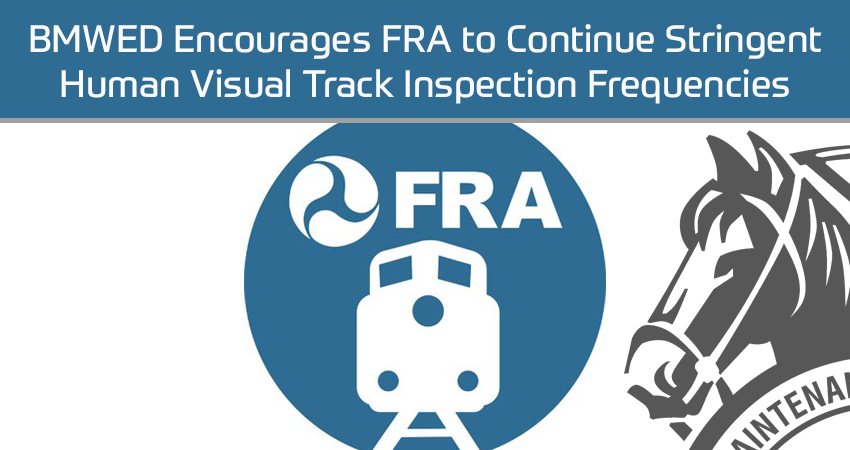BMWED Encourages FRA to Continue Stringent Human Visual Track Inspection Frequencies Published: Apr 14 2022 3:02PM
Despite misleading commentary from the Class 1 railroads and grandstanding by Republican members of Congress, the Federal Railroad Administration continues to do right for public safety and require visual track inspection frequencies as presently mandated in their track safety standards.
Currently, the railroads are not precluded in any way from using new forms of technology, including unmanned Geometry Cars, to aid in the identification of dangerous track defects. In fact, they have utilized this inspection technology frequently and ably for many years.
The BMWED agrees with the FRA in its support of the increased use of these Track Geometry measurement systems. The systems are impressive and any inspection-related technology that helps prevent train accidents is a win for the American railroad system. We do not stand opposed to the utilization of new tech. However, only a quarter (25%) of all §213 track safety defects identified by FRA in their track safety standards can be found by these Track Geometry measurement systems.
The railroads are being dishonest when they claim the FRA is curtailing the use of new inspection technology. There is no FRA regulation that prevents the railroad carriers from using unmanned Geo cars to assist in track inspection. The complaint from the Class 1 railroads regards the reduction of essential required human track inspection frequencies.
In-person track inspections remain a vital piece of safety defect identification and accident prevention. Many defects are corrected immediately when found by the track inspector, and those on-the-spot repairs help keep the trains moving with less disruption. With the American freight railroads operating under the Precision Schedule Railroading model, there is no room for error and there is no margin for service disruptions. Supply chains are already exceedingly slow, and the railroads are moving the longest, heaviest trains ever seen before in our nation’s history. We need these inspectors watching for the unknown effects on the American rail network and making the repairs that help avoid service disruptions that are otherwise not possible without a real, FRA qualified track inspector performing the inspections. These trains are carrying necessary commodities vital to our nation’s economic system. Many potentially dangerous commodities ranging from spent nuclear fuel, ethanol, and any number of other hazardous materials through the middle of our communities. If railroads are going to continue to experiment with these mega trains keeping current human visual inspection frequencies is essential to learning what they do to the track.
It is vital to the safety of rail employees and the public as well as to the American economy to demand that in-person inspection frequencies remain a mandated safety protocol by the federal government.
